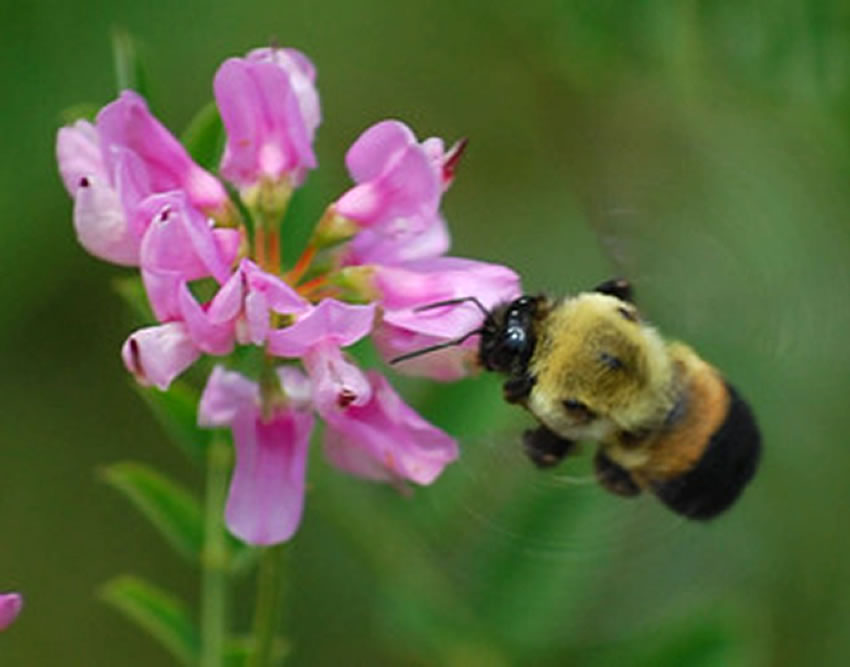Rusty-Patched Bumblebee (Bombus affinis)
By Zoe Statman-Weil
 Rusty-patched bumblebee pollinating a blossom. (Photo from discoverlife.org © Copyright Sheryl Pollock 2011.)
Rusty-patched bumblebee pollinating a blossom. (Photo from discoverlife.org © Copyright Sheryl Pollock 2011.)
The rusty-patched bumblebee (Bombus affinis) appears just like its name describes—a bumblebee with a rust-colored patch on the second abdominal segment of the workers and drones. Like many bumblebees these days, this one is struggling for survival.
The rusty-patched bumblebee used to be easily found in the United States throughout the east and upper Midwest, but recently the population has taken a sharp decline and can only be found in the northern most part of its old range. Scientists have estimated a decline of 86%. Similar effects have occurred in Canada, where the once common bumblebee is now shockingly rare and presumed to be absent in 99% of its historical range.
Why should we care about one of the many bumblebee species that we have in the United States? Bumblebees are very important for us as humans! Rusty-patched bumblebees pollinate wildflowers, and many of the food that we love to eat like cranberry, plum, apple, alfalfa and onion blossoms.
No other pollinator besides the bumblebee is able to perform “buzz pollination.” Bumblebees can grab the flower’s anthers and vibrate their wing muscles to release pollen that would otherwise not be reached. Buzz pollination is imperative for important crops such as tomatoes, peppers and cranberries.
The unique quality of the rusty-patched bee is its short tongue, which it sometimes uses to poke a hole in the back of the flower instead of accessing the nectar with the length of its tongue. Additionally, in Canada the B. affinis has been reported to pollinate milkweeds, sunflowers, clovers and berry and fruit flowers. While bumblebees are generalist foragers, meaning they do not depend on one flower species, but there are some species that depend on just them!
The importance of this bumblebee is inarguable, but it has many threats as a population: Agricultural and urban development is destroying and fragmenting bumblebee habitat. Grazing can also decrease access of these bumblebees to pollen since cattle eat off the tops of the flowers. Insecticide is another fatal side effect of agriculture to bee species. Besides these harmful effects of agriculture, invasive species can result in the decline of important flowers for the bees as well. And lastly, climate change and increased global temperatures can mean the loss of bumblebees that prefer cooler climates.
Another threat to B. affinis is the commercial bumblebee industry. This industry can (and has) resulted in pathogens spreading from the commercial bees to native bees, and is cited as the most probable rapid decline of the rusty-patched bumblebee. It is important to understand how important these bumblebees are to our food and to us so we now just how necessary it is to protect them!

